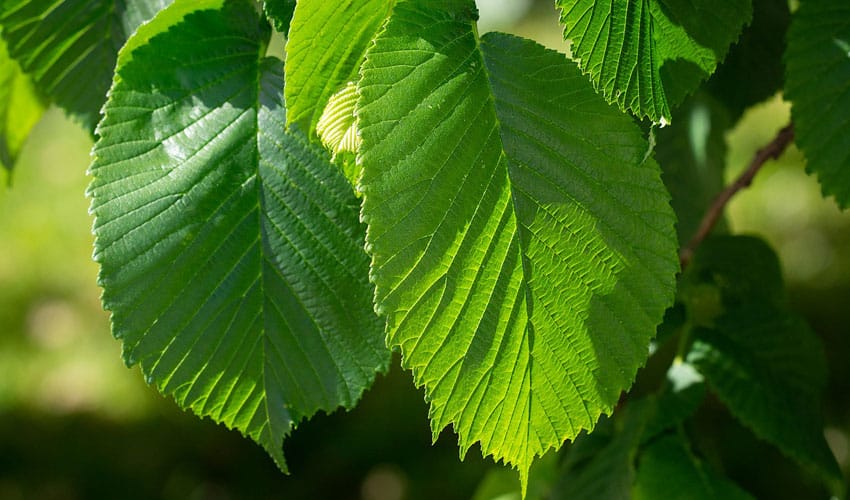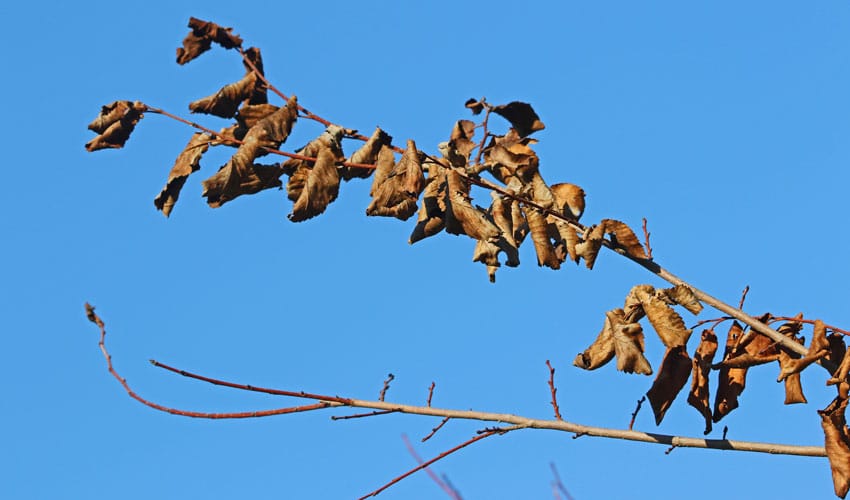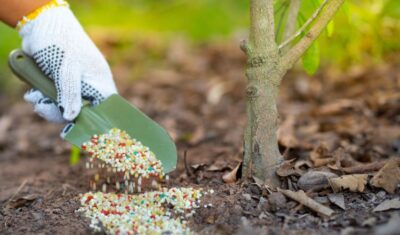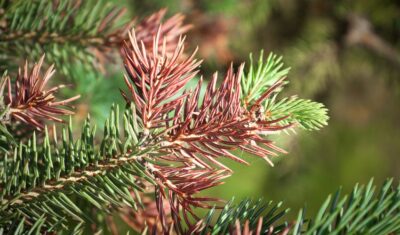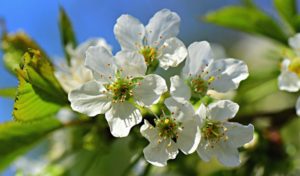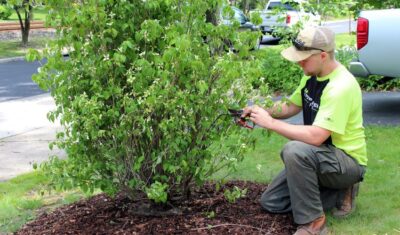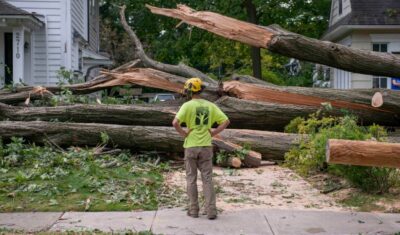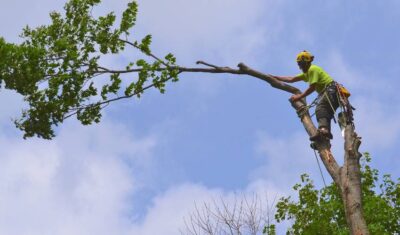Where did the name Dutch Elm Disease come from? How did the world wars affect the spread of this disease? How do I know if my elm has Dutch Elm Disease, what are ways to prevent it, and what should I do if I spot it?
Let’s get right to the point: there is no known cure for Dutch Elm Disease.
It has wiped out millions of elm trees worldwide, most notably in Europe, Canada, and the United States. Groves and streets that once were filled with towering shade-giving trees are now empty or are slowly attempting to grow replacement trees. In the UK alone, 25 million elm trees have died; France has lost over 90% of its elms. In 1930 there were 77 million elms in North America – by 1989, over 75% of those elms had died, thanks to Dutch Elm Disease.
Read about plant health care and how it can help prevent pests and diseases. >>
What is Dutch Elm Disease?
Dutch Elm Disease (DED) is a wilt disease caused by a fungus. Several species of the fungus have been discovered, but the important thing to know is that it is spread by elm bark beetles.
The fungus infects the vascular system of the tree, which is the system that carries water throughout the tree (similar to our veins that carry blood through our bodies).
The tree, to defend itself, plugs up its own xylem tissue to prevent the fungus from spreading. In doing this, however, it prevents water and nutrients from getting through either, which means that the tree eventually starves and dies.
How can Dutch Elm Disease be spotted?
The first sign of DED is wilting, yellowing, and browning foliage on individual branches. Usually, this will be seen first in the upper crown. However, if the fungus was introduced through the roots (nearby infected trees can spread the disease to their neighboring trees this way), then the bottom branches of the tree will show signs of wilting and yellowing first.
This usually happens during the summer months, so if an elm tree’s leaves appear to be changing color too early, it may be a sign that something is wrong. The withering leaves spread to the rest of the tree, and the roots die from lack of nutrients from the leaves.
An arborist is familiar with other ways to spot and diagnose DED, such as looking at the wood beneath the bark (it turns dark and brown streaks appear if it has just been infected), or by conducting some laboratory tests for the fungus.
How does Dutch Elm Disease spread?
The American elm bark beetle and the less common European elm bark beetle are responsible for the spread of DED in North America. The bark beetles like to settle in and breed in dead elm wood (tree or log form) just under the bark. This infected wood is then spread to live trees by the beetles as they feed on living elm trees. They can travel up to ¼ mile to find food sources, but wind can help them to travel further.
Diseased elms can also share the fungus with nearby trees (within 50 to 60 feet) through root grafting. Roots from adjacent trees become entwined and fuse together, allowing water to pass from one tree to the other. The fungal spores are carried in that water, eventually infecting neighboring trees.
A Quick History of Dutch Elm Disease Fungus
You may have wondered why this fungus has the name “Dutch Elm Disease.” It’s not because it affects only Dutch Elm trees, as they are not the only ones susceptible to this disease.
The fungus was first discovered in Europe in 1910. By 1921 it had spread and was isolated in The Netherlands by Bea Schwarz, a Dutch phytopathologist, where the disease got its name.
The fungus hitchhiked over to the US in 1928, and was mostly contained until World War I, where quarantines were suspended to deal with wartime matters. It reached Canada by World War II and continued to spread across America during the 1950s, 60s, and 70s. It has now also reached New Zealand, discovered there in 1989.
Dutch Elm Disease has been here in Ohio since 1930 and has destroyed most of our elm groves, leaving only a few survivors.
So, as you can see, this fungus loves to travel and see new places, and as a result, millions of elm trees have been lost. With that depressing news, is there any way to stop it from spreading and killing the elm trees that are left?
How You Can Prevent the Spread of Dutch Elm Disease
Limit pruning to the dormant season
There is no cure for Dutch Elm Disease but that doesn’t mean that the progression cannot be slowed or even stopped. If you are lucky enough to still have an elm tree on your property, keep a close eye on it.
Regular pruning and watering will help to keep the tree healthy to fight off pests, but it is important to only prune elm trees while they are dormant. If they are pruned at any other time, the fresh cut wound will attract the elm bark beetles. This is why, at Independent Tree, we stop pruning elm and oak trees in March.
The cities of Edmonton and Calgary have taken this suggestion a step further, where pruning elm trees from March 31 to October 1 is banned, in an attempt to spread of Dutch Elm Disease there.
Remove and destroy infected wood immediately
When caught early, it may be possible to prune off the infected branches to save the rest of the tree. If less than 5% of the tree’s crown is affected, if the infection is new, and if it is only in the upper crown, an Independent Tree arborist may be able to prune off the affected branches at a branch fork 5 to 10 feet below signs of infection.
If you do have an infected elm, removing it as soon as possible and destroying any of the wood is vital to prevent the spread. The bark beetles love dead and dying elm wood, and that’s where they reproduce and start the cycle of spreading all over again. If your tree is infected, schedule a tree removal immediately.
If there are other elm trees near the infected one (within 25-50 feet), an Independent Tree arborist may recommend disrupting the natural root grafts between them to prevent infecting the neighboring trees.
Direct Sap Stream Injections of Systematic Fungicide
For healthy elm trees or those with only one branch infected, our professional arborists may recommend a systematic fungicide injected directly into the sap of the tree. It should be noted that this is a preventative treatment and not a cure, and often needs to be injected every 1 to 3 years.
Plant DED resistant trees
No elm tree has been found to be completely resistant to DED, so we suggest planting a variety of different types of trees instead of just one type. As suggested by the United States Department of Agriculture’s Forest Service, “When selecting landscape trees and their locations, plant a mixture of tree species appropriate to the site. In addition to the species diversity, consider spacing of the trees. Future problems with root grafts can be avoided by carefully selecting planting location and maximizing tree species diversity.”
However, if you’re looking for an elm, the Princeton, American Liberty or Independence cultivars of American elms have proved more resistant than other varieties. The Chinese elm, Ulmus parviflora, has been shown to be resistant (but not immune), as well as Japanese varieties such as Zelkova serrata.
You can find more management options for DED in this Dutch Elm Disease fact sheet from the Ohio State University Extension.
Do you have elm trees?
Keeping your elm trees healthy is the first step in preventing Dutch Elm Disease. Give us a call at 440-564-1374 or contact us online for a complimentary inspection and management recommendations.
Recent Articles
Topics
About The Author

STAY IN THE LOOP
WITH OUR
LATEST UPDATES
"*" indicates required fields

